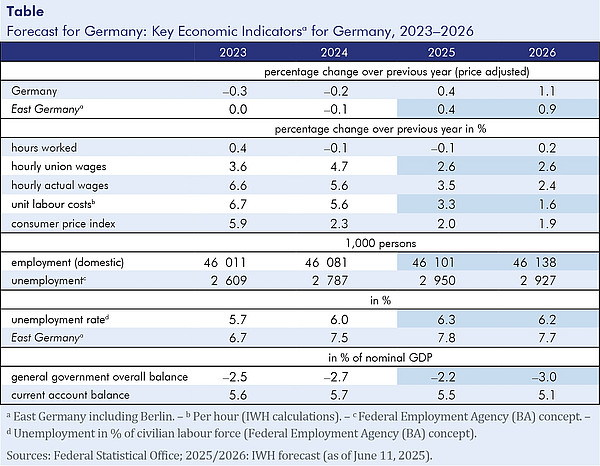IWH Summer Forecast 2025
Economic recovery in Germany – but structural problems and US trade policy weigh on the economy
June 12, 2025
The German economy has picked up somewhat in the first half of 2025. This was helped by the temporary increase in demand from the US in anticipation of higher tariffs. If the US does not escalate its trade conflicts further, production in Germany according to the summer forecast of the Halle Institute for Economic Research (IWH) is likely to increase a bit (by 0.4%) in 2025, after two years of decline. In March, the IWH economists were forecasting growth of 0.1% for the current year. Growth of 1.1% is forecast for the year 2026. Similar expansion rates are to be expected for East Germany.

Our Expert

Vice President Department Head
If you have any further questions please contact me.
+49 345 7753-800 Request per E-Mail


